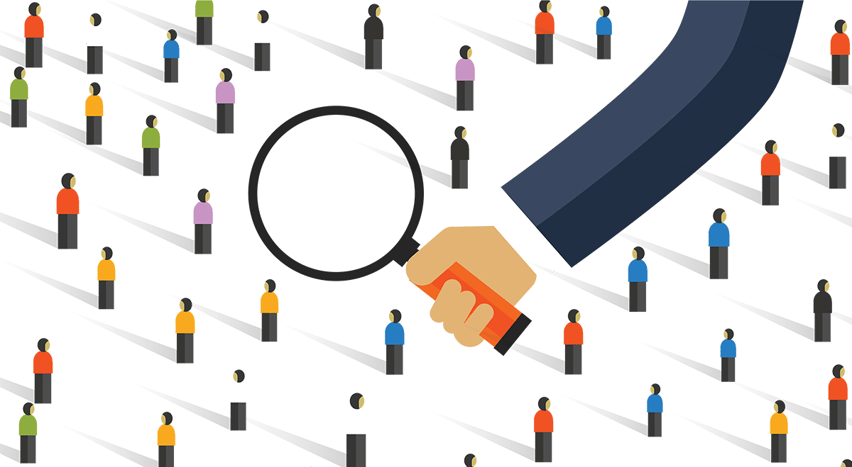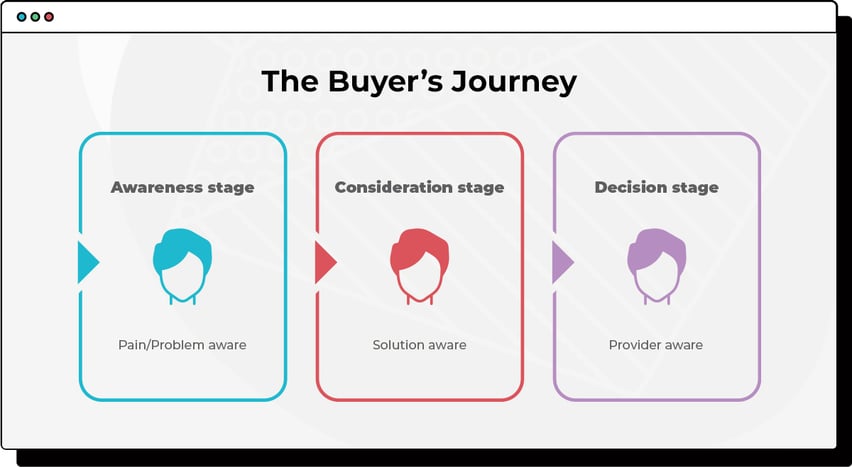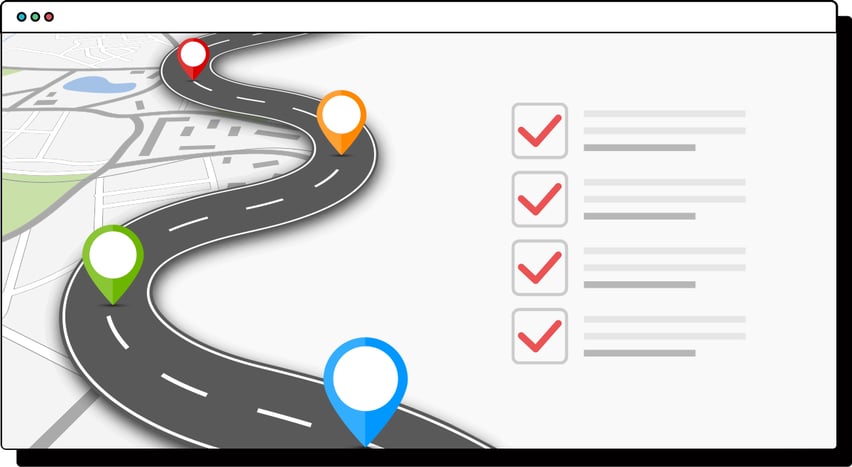Imagine you could walk around in your customer’s shoes, experiencing every turn and twist in their path towards making a purchase. That's precisely what buyer journey mapping allows you to do. It's not just a buzzword tossed around in marketing meetings; it’s a strategic approach that involves deep diving into your customers' minds, understanding their needs, fears, and desires as they progress through the stages of becoming not just customers, but loyal advocates of your brand.
In the following paragraphs, we’ll dive deeper into the intricacies of buyer journey mapping, exploring its importance and the components that it’s comprised of.
What is Buyer Journey Mapping?
At its core, buyer journey mapping is a strategic framework that visualises the path a customer travels from when they first become aware of your product or service to their final decision to make a purchase. It's like a roadmap, detailing each step a potential customer takes, the decisions they face, and the emotions they experience along the way. This map is not just a linear progression; it's a complex, multi-faceted journey with various touchpoints and influences.
The journey isn't just about transactions though; it's deeply rooted in customer psychology. By mapping the buyer's journey, businesses gain invaluable insights into what motivates their customers, what concerns or confusions they might have, and what kind of support they need at different stages. This level of understanding allows companies to tailor their marketing strategies, communication, and product development to meet customers' needs more effectively.
Buyer journey mapping involves collecting data, analysing customer behaviour, and piecing together the various interactions customers have with your brand, both online and offline. From social media interactions and website visits to face-to-face conversations and customer service calls, every touchpoint contributes a piece to the bigger puzzle.

The Importance of Buyer Journey Mapping
Buyer journey mapping is not just about plotting a path; it's about fully grasping the customer's experience, a vital aspect in today's customer-centric market.
Here's why buyer journey mapping is indispensable:
- Enhanced customer understanding: By mapping out each stage of the buyer's journey, businesses gain insight into the needs, preferences, and pain points of their customers.
- Personalised marketing strategies: In a time where personalisation is crucial, understanding the buyer's journey allows businesses to tailor their marketing efforts. This customisation can result in more effective marketing, higher conversion rates, and improved customer satisfaction.
- Identification of key touchpoints: Touchpoints provide opportunities to make a positive impression, address concerns, and influence the buying decision. Understanding these moments is essential for optimising the customer experience. Understanding the data collected further assists in enriching the customer journey. The more a business knows about its customers, the better it’s able to be a friend or partner. In this era, it's expected that businesses know their clientele, and collecting data builds on that relationship.
- Enhanced customer retention: Buyer journey mapping extends to post-purchase experiences, focusing on customer retention. By continuing to engage customers even after a sale, businesses build long-term relationships, leading to repeat business and referrals.
- Competitive advantage: In a competitive market, understanding your customer better than your competitors is a big advantage. Buyer journey mapping provides unique insights that can help differentiate your brand, offer a better customer experience, and position your business as a leader in your industry.

Key Components of Buyer Journey Mapping
Buyer journey mapping is a comprehensive process that involves several critical components, each playing a unique role in painting a complete picture of the customer's experience. Understanding these elements is essential to creating an effective and insightful journey map:
1. Customer personas: This is the starting point of any buyer journey map. Personas are semi-fictional characters that represent your ideal customers, created based on market research and real data about your existing customers. These personas help you understand who you are mapping the journey for, considering their specific needs, goals, challenges, and behaviour patterns.
2. Stages of the buyer’s journey: Typically, the journey is divided into several key stages, although these are custom to each business, at the core it comes down to these three:
- Awareness: The customer realises they have a problem or need.
- Consideration: The customer starts researching and considering different options to solve their problem or fulfil their need.
- Decision: The final stage where the customer chooses a solution and makes a purchase.
These stages can be further broken down or customised based on the specific business model and customer behaviours.

3. Touchpoints: These are the points of interaction between the customer and your brand. Touchpoints can include visits to your website, social media interactions, emails, customer service calls, and in-person engagements.
4. Customer actions, thoughts, and emotions: For each stage of the journey, it's crucial to document what actions the customer takes, what they are thinking, and how they might be possibly feeling.
5. Goals and objectives: Each stage of the buyer’s journey should have clear goals and objectives from the business's perspective. These will help in creating focused strategies to guide the customer through the journey.
6. Pain points and opportunities: Identifying the challenges customers face along their journey is critical. Recognising these allows businesses to address them directly, improving the customer experience.
By carefully analysing and integrating these components, businesses can create a comprehensive buyer journey map that not only reveals the path customers take but also provides actionable insights to enhance their experience. This map becomes a living document, evolving with your customers and your business, ensuring continued relevance and effectiveness in your marketing and sales strategies.

An Insight into Buyer Journey Mapping Implementation within HubSpot
Once the mapping is completed and signed off, implementation will need to take place in your chosen CRM, i.e. HubSpot. A couple of key elements will be utilised to help indicate the various stages a contact might go through:.
1. Lifecycle stages – It’s critical to define, either the default given stages, or specify your own. Everyone around the table must agree, as this is not something you want to change too often. Once defined, automatic assignment can be used based on specific data collected or behavioural traits.
Typically the default stages are as follows:
- Subscriber
- Lead
- Marketing Qualified Lead
- Sales Qualified Lead
- Opportunity
- Customer
- Other
2. Lead status – This can indicate the various states a lead / prospect can go through. This can also be used to indicate readiness to buy, or bad timing.
Typically the default statuses are:
- New
- Open
- In Progress
- Open Deal
3. Deal stages - This is more specific to your sales process and should be designed with your client and/or product in mind.
- What are the stages people will go through as the move through your sales process?
- What is needed at each stage to facilitate progression?
- What data is required?
- What or who needs to be notified at these various stages?
These are just some of the questions that can and should be answered when determining your deal stages.
HubSpot provides the following stages by default, but this is very much subject to change based on your own sales process:
- Appointment Scheduled: Indicates that an appointment or meeting has been scheduled with the potential customer.
- Qualified to Buy: Indicates that the prospect has been qualified and is considered a potential customer
- Contract Sent: Marks the stage where a contract or proposal has been sent to the prospect.
- Contract Negotiation: Indicates that negotiations or discussions about the contract terms are in progress
- Contract Sent: Represents the stage where the revised contract or proposal has been sent back to the prospect
- Closed/Won: Marks the successful closure of the deal. The prospect has accepted the contract, and the deal is considered won
- Closed/Lost: Indicates that the deal did not proceed to a successful close. The prospect has chosen not to move forward.
Overall, if implemented correctly these elements will also form part of your reporting layer.

Buyer Journey Mapping with Struto
From the initial awareness stage right through to the final decision and post-purchase experience, buyer journey mapping offers invaluable insights into what motivates, concerns, and influences your customers. It's about piecing together a narrative that isn't just about selling a product or service but about creating an ongoing relationship with your customers, marked by understanding, responsiveness, and care. If you're ready to unlock the full potential of your business by mapping out your buyers' journeys, Struto is here to guide you.
Within a customer mapping session with Struto, one of our experienced strategists will take the time to thoroughly understand your business and you through a consultation of what your buyer journey mapping might look like, for a more holistic overview of your customer path, and how to engage them better.

